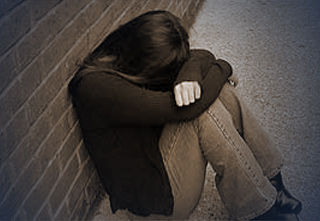 The family of 19-year-old Ashley Smith says guards watched and did nothing as the young woman strangled herself to death in an Ontario prison cell. Smith spent her teen years in and out of juvenile custody and, once in the adult system, had her mental illness answered by physical abuse, her family alleges in a legal battle to find out more about their daughter’s death. For youth incarcerated in the United States, the mental care they get — or don’t — varies.
The family of 19-year-old Ashley Smith says guards watched and did nothing as the young woman strangled herself to death in an Ontario prison cell. Smith spent her teen years in and out of juvenile custody and, once in the adult system, had her mental illness answered by physical abuse, her family alleges in a legal battle to find out more about their daughter’s death. For youth incarcerated in the United States, the mental care they get — or don’t — varies.
“In some places, all of this is really done quite well,” said Preston Elrod, a professor in the Department of Criminal Justice at Eastern Kentucky University and a juvenile justice specialist. “But in other places, none of it is done well.”
About 70 percent of young people who come into an institution have a diagnosable mental health disorder or symptoms of one, according to Gina Vincent, a psychiatry professor from the University of Massachusetts Medical School, in a 2012 report about screening and assessment in juvenile justice systems.
Rules vary by state, though in many places, children will not stay in the juvenile detention system, receiving what juvenile-tailored services exist, as long as Smith did: her 18th birthday. New York, for example, treats all defendants aged 16 and older as adults, no matter the offense.
“A large percentage of young people that come into institutions are experiencing things like anxiety and depression. Acute depression is particularly problematic for girls,” said Elrod.
Nationwide, about a dozen young people died every year from 2002 to 2005 in state juvenile correctional facilities, according to the latest available federal statistics. Most were aged 16 or 17, and nearly half died by their own hand.
One way to make psychiatric diagnoses of young people is to employ psychologists at all points of entry into the justice system, including probation offices, detention facilities and child welfare agencies, wrote Vincent.
“The problem with this approach is that it would be extremely costly given that approximately two million youth are arrested each year, of which more than 600,000 are processed through juvenile detention centers,” she continued.
“It’s a system that has never been appropriately resourced,” said Elrod.
Back in Canada, Howard Sapers, Correctional Investigator of Canada, saw videos of Smith in the months before her 2007 suicide. “There are 160 use-of-force incidents over the 11 and a half months Ashley Smith was in [adult] federal custody,” he told TV show "Question Period."
A pair of videos made public in the Smith court case show the woman, apparently calm, being strapped into an airplane seat with duct tape. In another, a prostrate Smith is drugged against her will.
Her suicide prompted Sapers’ department to look at deaths in custody, where they saw “sadly similar” patterns to the Smith case. In a 2011 report, he advised tailoring policies for mentally ill inmates.
Since then, he said, there have been some good hires and good training on the part of the Correctional Service of Canada. “But some of the lessons learned have been ignored.”
A coroner’s inquest into Smith’s death is ongoing.
